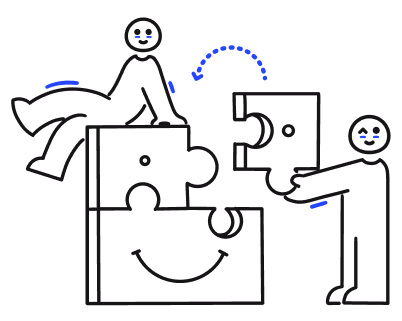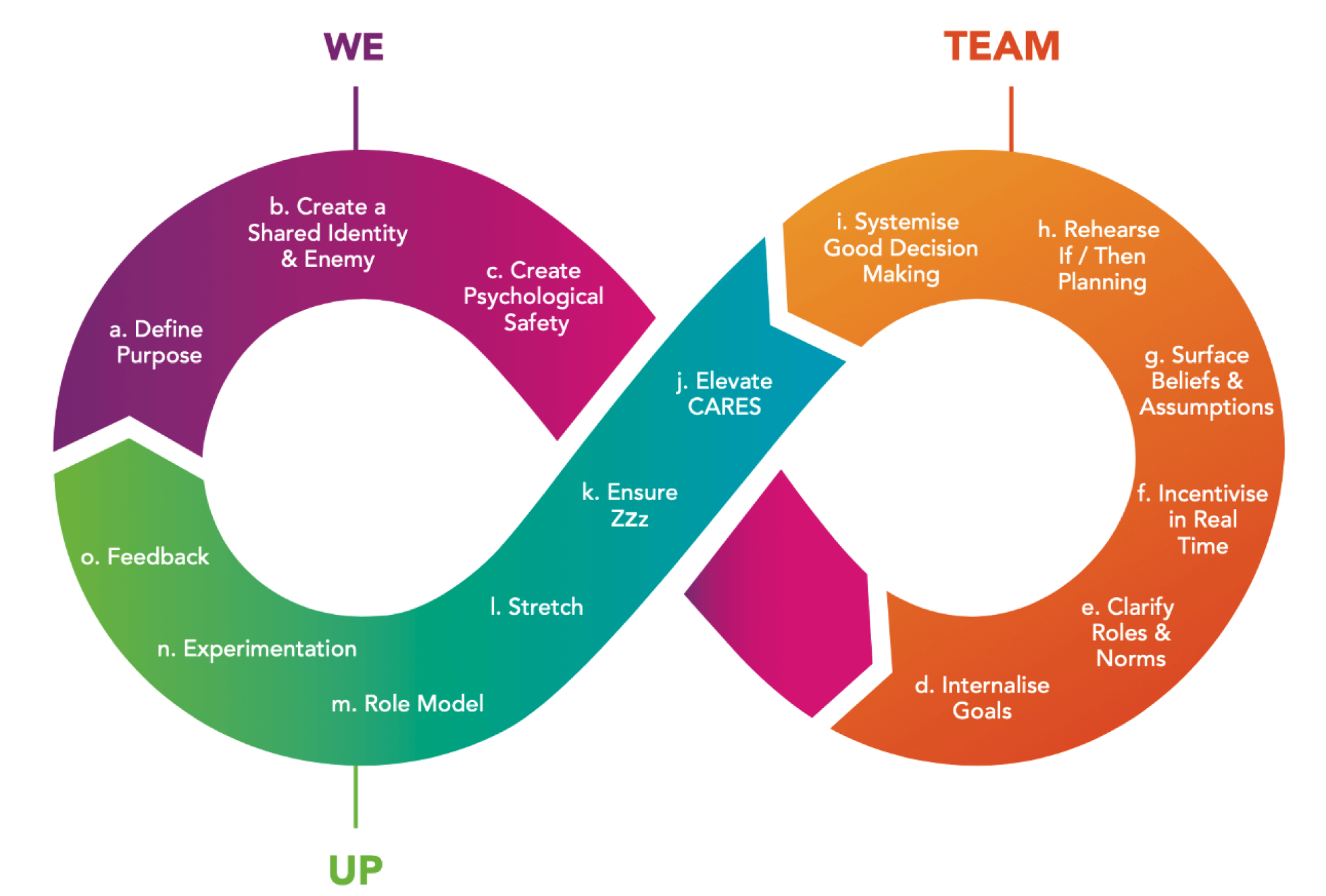My name’s Andy Longley and I’m a performance psychologist and keen student of neuroscience. And I'm here to talk to you about team leadership.
To date, I’ve spent my career working with leaders and teams from many different walks of life ranging from professional sports teams, special-forces military teams, commercial airline pilot teams, United Nations Peacekeeping teams, all the way to business executive teams.

I’ve also been fortunate enough to have been an executive leader myself within some great companies like Adidas and Zalando in Germany. So I’ve experienced your challenges on team leadership personally.
From flawed to flawless: 5 steps to leading distributed teams

In this article…
The state of teams and leadership today
Globally, there’s a clear trend where business models are increasingly shifting to depend on ecosystems rather than traditional teams, with agile teams needing to collaborate across silos. The difference between winning and losing for an organization is down to the quality of collaboration between businesses and people.
Ultimately, whether or not you have a high performing team will be a competitive edge.
However, the existing models for both high performing teams and team leadership do not align with the latest research. They also don't offer practical levers for overworked team leaders to pull that actually improve team dynamics. Instead, they focus on personality or competencies or processes.
Time and time again, I saw leaders and teams struggle to make any real progress when using these approaches. It was like trying to conduct brain surgery with a butter knife instead of a precision instrument… no wonder they didn’t work.
The question is: "What can team leaders do to enhance their team’s performance?"
We’ve done the hard work for you, and according to the latest neuroscience research the answer is ‘We Team Up’. I’ll share more about this soon, but first let’s clarify what team leadership really is.
So, what exactly is team leadership?
Team leadership is about the leader (or even team members) creating the right environment for the team members to thrive.
Any team leader’s most important role is to amplify their own efforts by actively ensuring that all team members have the best conditions in place for them to perform. If you, as a leader, are able to achieve this with your team, then that’s team leadership!
This is where I found that the existing team leadership models fell flat on their face.
They were not at all about creating high performance environments for others to thrive. They were about labelling or developing individual leadership capabilities that were not focused on the team, but more on helping an individual climb the career ladder themselves.
This realization brought me to neuroscience, which is arguably the behavioral science that has made the most rapid knowledge advancements over the last few decades. Neuroscience is all about understanding how our brain works, and then using this new knowledge to create environments where our team members are set up to succeed.
This ground-breaking new research means that we have to throw away what we used to think about teams and team leadership. We have to re-define it around creating brain-friendly team environments.
A science-based model for better team performance
We've spent the last four years examining the existing scientific research, speaking with leading universities, and conducting our own research to create the teamup.inc model of Team Leadership based on applied neuroscience. We love to keep things simple and memorable for you, so we call the model We-Team-Up.
The research tells us that these three focus areas are what is needed to build a high performing team:
- We: How we use purpose, identity and relationships to create the shared context and trust between team members and the team leader.
- Team: How we use clarity of role, team goals, incentives, scenario planning, working with biases and decision-making to create the conditions for optimum team performance.
- Up: How to motivate, develop, stretch and coach the team to keep raising their team performance bar.

The We-Team-Up model is intentionally shaped as an infinity loop. This highlights both the sequential and ongoing responsibilities we have as leaders to shape high performance with our teams.
Team leadership is tough. It’s not a tick-box exercise where, after we have done an activity with our team, we consider this ‘achieved’ and move onto the next aspect. Teams are dynamic social systems, and we need to continually monitor whether these three elements are in place and working.
The three roles break down further into 15 practical steps to apply with your team. The brain research is culture and industry agnostic, so it can be used by any team on the planet to create high performance. Now let’s look a little deeper to better understand team leadership, and what you can do to ensure your team is set up for success.
We: Shared purpose and identity
- Purpose
- Identity and Enemy
- Psychological Safety
Building the team ‘We’ is foundational. Without this, there can be no high performance. ‘We’ factors create shared context between team members. To create the ‘We’ factors, you want to articulate your team's shared purpose, reinforce a unique team identity, define belonging with team rituals and symbols, and create a team adversary and sense of a shared history among the team members.
The next foundational play for the ‘We’ is to create a positive team culture and psychological safety so team members feel they can be themselves, contribute and even challenge.
Team: Collective direction and collaboration
- Goals
- Roles/Norms/Interdependencies
- Incentives
- Comms: Going beyond assumptions
- Scenario planning
- Bias busting
‘Team’ factors are about creating clarity for your team, reducing uncertainties and de-risking decisions. To build the ‘Team’ factors, set motivating goals that are internalized by your colleagues, and that stretch their skills. Leave no room for uncertainty around team strategy, role and position, and expected behaviors within your team.
Ensure incentives drive a blend of individual and shared team behaviors you need to perform, and that any rewards are given as close in time to the positive behavior as possible.
“Effective teamwork begins and ends with communications”
Mike Krzyzewski (Legendary USA Basketball Coach)
It falls to you as the team leader to improve the communications between colleagues. This means getting dialogue and employee feedback to go beyond assumptions and biases. Instead, you need to get the team communicating in a way that avoids groupthink and our other inevitable unconscious biases.
Up: Motivation, development, and growth
- Motivation & CARES
- Wellbeing
- Stretching the team
- Role Modelling
- Practice & Experimentation
- Feedback
For you, as the team leader, to keep increasing the team’s performance over time requires you to focus on ‘Up’ factors. It’s hard to understand our team member’s aspirations and individual motivators, so it’s essential we understand what motivates all humans.
And let’s face it, we need to motivate our team, which means focusing on what the brain “CARES” about. Every team member (and you as their team leader) will experience a strong threat or a reward reaction in response to five predictable factors:
- Certainty
- Agency
- Relationship
- Equity
- Social Status
Team members need to feel they are Certain about what’s ahead, have Agency & control over their work, have positive Relationships and Social standing in the team, and feel there is Equitable treatment across members. You also have a large part to play in ensuring team members come ready to perform by promoting rest and wellbeing. Finally, driving up standards over time takes creating a high-performance team culture.
For example: Celebrating success, being grateful for contributions and elevating positive role models. Great team leaders stimulate practice, experimentation and feedback to maintain a high bar, while also encouraging learning from failure.
6 Top takeaways to apply in your team leadership today
We: Shared purpose and identity tips
- Working with your team, co-create your team’s own shared purpose. Ensure it’s personally meaningful and everyone has contributed.
- Work continuously to create a unique team identity. Reinforce this in-group membership through co-creating team habits, rituals, a shared history and even a common adversary e.g. slow decision making or lateness.
Pro tip: If you’re looking for inspiration on how to do this, look no further than great sports teams. Through their names, chants, uniforms, songs, rituals and shared storytelling, they form powerful team identities.
Team: Collective direction and collaboration tips
- Ensure all team members are crystal clear on their role and responsibilities. Having this clarity and certainty reduces both anxiety and inefficiencies for your team. This is especially important in times of remote working where we have less organic time together as a team, which is where a lot of this clarity historically has come from.
- Use Scenario (If-Then) planning to help the team prepare for different eventualities. Discuss and plan for different possibilities so the team has not only stress-tested their plans but is also able to act decisively when needed.
Up: Motivation, development, and growth tips
- Support the development of your team with Stretch goals. If your team members feel like they are developing and growing, they will find this extremely motivating. This is again especially important in times of remote or distributed work where we have less social contact and interactions to motivate us. We have to be more intentional in how we motivate our colleagues.
- Encourage experimentation by treating failure as a learning opportunity. Your team will be more likely to experiment and innovate if they are not punished for failure, but rather failure is reviewed through the lens of ‘what did we learn from that?’
Leading your team to high performance takes time
We recognize how challenging it is as a team leader to create a high-performance environment, and that the tools and techniques we may have used in the past are no longer creating value. So, we have taken the time to bring together the latest applied research on team leadership into our teamup.inc model…so that you don’t have to.
With this perspective on team leadership and these 6 first steps, you're ready to get started elevating your own team’s performance.
If you’d like to learn more, or use one of our cutting-edge diagnostic assessments to develop either your own team leadership, or your team’s performance, visit us on our LinkedIn page.
Equip HR and managers with tools to engage, recognize, and drive performance.




